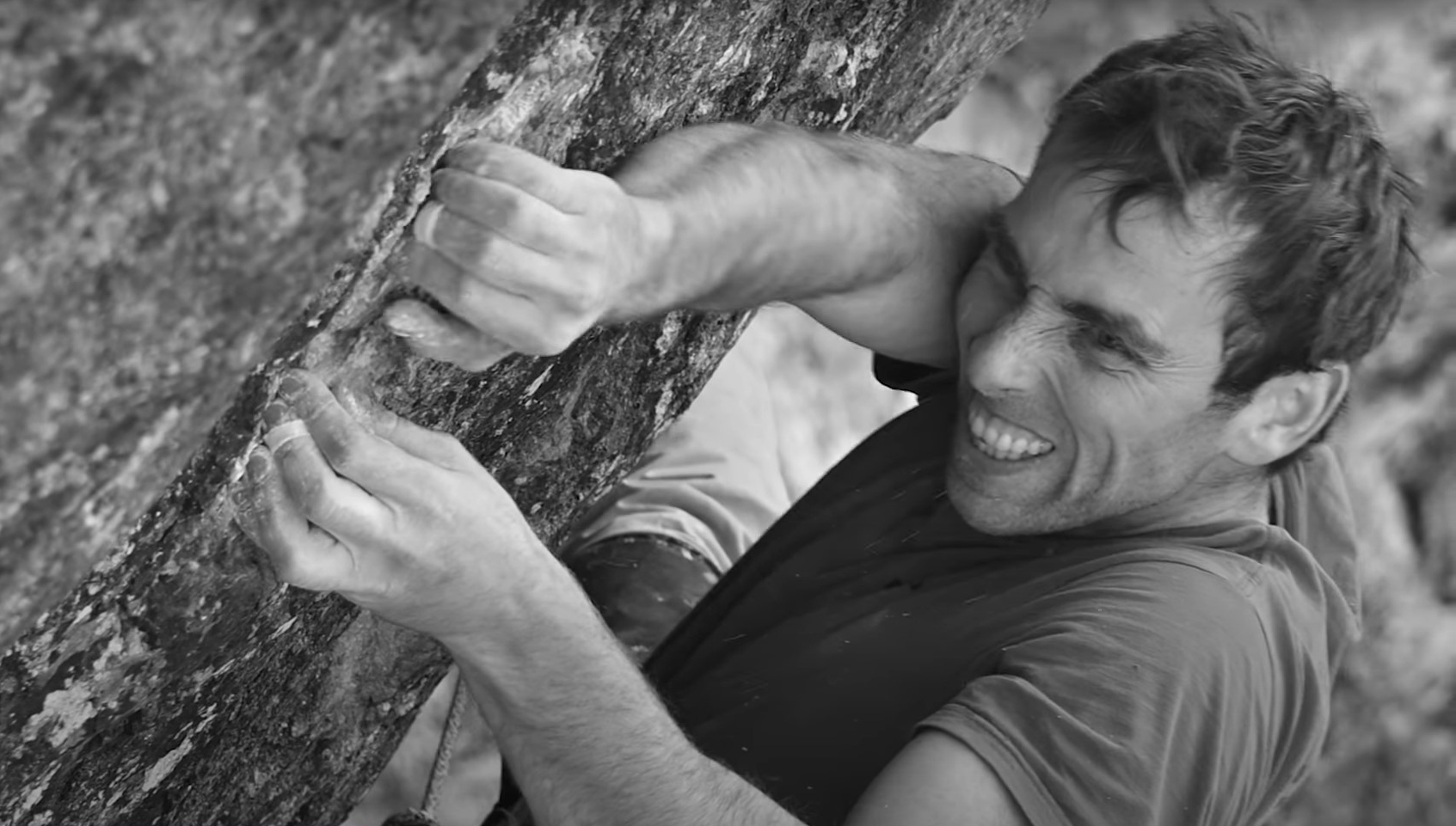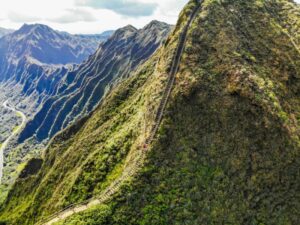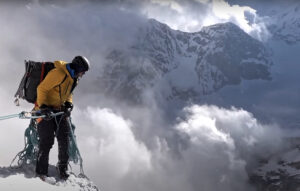Redpoint (v): To climb a route on lead without falling, but only after trying and falling at least once.
Note the qualifier “at least once.” Want to know what hard redpointing’s really like? You asked for it.
Robbie Phillips first rappelled down the schist wall that would produce What We Do in the Shadows (E10 7a or 5.14b) in August 2020. The short film of the same name zooms in and out a lot, but it maintains the same focal point that Phillips did for two years: a section of rock about the size of a parking space.
The film opens on Phillips’ care-free attitude. He cranks out dirtbag clichés like hotcakes, but somehow makes each one stick.
“I can commit to a scary runout, but not to a stable job.”
“Life is for livin’. Climb now, work later. I’ll deal with the real-life shit when it happens.”
Phillips’ candor strikes an unusual balance between massively psyched and totally mellow. Early on, he imitates a primordial Chris Sharma scream in what his mom would probably call his inside voice.
The video follows suit; gentle music often accompanies footage of steep climbing on gnarly, tiny holds.
Functionally, the film constitutes a deep dive into the redpointing process. Strange things start to happen as it inexorably sucks the viewer into Phillips’ consciousness.
What do we do in the shadows? Phillips gets weird.
Like any route at a climber’s physical limit, he finds What We Do impossible at first. By October, he has pulled “barely one move” on the several-metre-long crux.
Soon, Scottish climbing legend Dave MacLeod makes an appearance. His thoughts on the route lend credence to Phillips’ evaluation: can confirm, “it’s hard.”
But steady progress takes over. MacLeod and Phillips soon begin to find subtle nuances that generate small victories. Gradually, sequences emerge and the climbers begin to link them together.
Winter comes as a bizarre interruption — a tragedy provokes a stirring tribute, and leads to a spectral interlude.

“I’d never felt so comfortable in silence and darkness,” Phillips says.
After a substantial self-reflective period, Phillips rappels back down What We Do in the Shadows and makes an odd discovery. “Funny what a year does,” he says. “I’d say the holds look smaller!”
Of course, they’re the same holds. Phillips is just a different Phillips. He’s changed. It’s clear he’s not the same careless vagabond that he was at the start of the film. At least, he’s unwilling to play that character anymore.
Ultimately, that’s how it goes on long climbing projects, and it’s what makes What We Do in the Shadows (the film) work. We change, but climbing doesn’t.
It’s more than a little absurd to crystallize one’s entire life experience into a section of a cliff the size of your garage floor. As someone who’s done it, I can say that it shows you things about yourself that you don’t want to see. It’s hard to admit that your sense of self-worth has become inextricable from your ability to hold on to a tiny piece of rock.
And if you’re really in the throes of it, it may seem like all you’ve got.
Does redpointing imitate life, or does life imitate redpointing?
Robbie Phillips flirts with that dark energy, and invites us to see everything that informs it and comes from it — stoke, heartbreak, self-deprecation, and obsession all influence the action.
Most publicized climbing looks triumphal — successful climbers pump their fists at the tops of routes and proceed to tell the world their stories. If you want to acquaint yourself with the underbelly of hard redpointing without physically dragging yourself through it, watch What We Do in the Shadows.
Oddly, I’m not sure I’d want to watch it if I was in the process of a prolonged redpoint. As the film wore on, Phillips’ inner-monologue voice-overs started to hit uncomfortably close to home.
But I could just be feeling insecure. Maybe I should just go climbing. “Life is for livin,” right?






